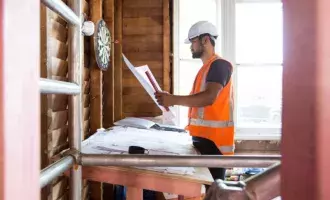The concept of virtual wards came to my attention about nine years ago, when my then employer sought to partner with a virtual wards provider to help hospitals facilitate earlier, supported discharges.
One of the questions we asked the supplier was: ‘Why have you only piloted deployments to date?’ The model appeared interesting and the technology advanced. The patient outcomes seemed acceptable, with high levels of patient satisfaction. Despite discharge being a seemingly intractable problem, the promise of this technology seemed revolutionary.
“Outside of the pilot we are not sure we prove the benefits case, because we cannot get to scale,” was the answer.
In short, the supplier had demonstrated that, without scale, virtual wards do not make sufficient impact on patient care to justify their costs, with a list of small-scale, successful deployments but which they had failed to sustain.
Fast forward nine years and virtual wards are a key part of NHS thinking. Indeed, there’s a race to get to 7,500 beds this year and 24,000 by 2023 - a bold ambition.
So, where are local systems in delivering this ambition? There are many dimensions we can look at, such as if a pilot consists of up to two wards, with 30-40 beds each, how many ICSs are operating vertical wards at levels above this? Or operating at occupancy rates notably lower than the beds available? At this point I also wonder if there are ICSs now experiencing a decrease of virtual ward bed utilisation (seasonal variations aside). And what can we learn from ICS’s running models which are, in effect, running very low clinical utilisations at less than 30%.
From early soundings, it appears that the progress and impact has been variable. In recent discussions with ICSs at Healthcare Excellence Through Technology (HETT), three schools of thought were evident. School one is ignoring the NHSE programme targets. School two is focusing on deploying technology and reporting on pilot scale progress. And school three is feeling the pain of operational and human challenges by scaling services wider than a pilot and/or experiencing low clinical performance - for example, discharge rates or readmissions.
In particular, those in the third school of thought were expressing two key narratives. The scaling challenge ICSs are facing has nothing to do with technology - some were even reporting they had too much technology. Not surprisingly, the challenges related to people, consistency, communications and trust. The other common theme was that funding and resource challenges were significant. To sustain models with low clinical utilisations, ICSs will need more money to hire more resources and even then, they would be unable to find sufficient volume of nursing resources.
Those in this school of thought were effectively reaching the same place as the partner I spoke to nine years ago. Schools one and two are also likely to come to this realisation.
The future outlook of virtual wards
If virtual wards have not reached scale between 2013 and 2022 for similar reasons, how realistic are targets like 24,000 beds in 12 months without additional support?
In June, virtual wards were described at NHS Confed as “our big bet for this year”. In that context they must be successful. Covid-19 recovery in part drives the need for virtual wards, and the need to move at pace, and ignoring the challenge is to ignore the human cost of delayed access or a lack of choice of the care you need and where you can receive it.
We have national funding, but how much will be forthcoming after the current allocations, or will current allocations survive even the immediate term fiscal tightening expected across the public sector? Inflation may also undermine the effectiveness of what is currently being funded.
Outside of the funding, patients and their carers are expressing high levels of satisfaction with the choice of care at home and the level of care they’ve received via virtual wards. Plus, a body of operational and clinical knowledge is now forming, indicating that virtual wards can be a safe alternative to in-patient hospital care.
But there are challenges, and those challenges - while forcing innovation - are not simply technology based. Delivering technology-enabled care, with the highest level of patient outcomes, and giving clinical staff as much time as possible for their patients, is something of a Gordian knot. And how do we ensure patients feel they have the time and attention they need from their care staff?
Where to start with a solution
There are no ‘silver bullets’ to help the NHS clinical staff resourcing challenge. However, if some virtual wards nurses are reporting that they deliver less than 30% of their time in clinical activity, then their time is presumably being consumed by other low to no-value added activities such as administration, form filling or logistics. Can external resources and partnerships delivered in the right way, integrated properly with the frontline, deliver real improvements both operationally and critically to the lived experience of those working in the NHS? Do clinical staffing models need to allow for different staffing ratios than on physical wards and do the NHS need to be better supported to enable this?
We think that the help the NHS needs in scaling the availability of virtual wards and growing expertise in virtual care is not to outsource the services, but to seek expertise in enabling operational services support.
This approach isn’t new, simply applied to a new context. It’s what happens in every hospital every day. Every minute of direct and indirect care given to a patient is a team effort, and that team extends well beyond the doctor, nurse or allied health professional. It includes administrative staff, porters, housekeepers, pharmacists, radiographers, accountants, a records manager, cooks, volunteers, and the list goes on. Nobody would dream of trying to run a hospital with just doctors, nurses and an electronic patient record system so why are we effectively trying to do that with virtual wards. We risk building new capacity with no effective support structures which will be unsustainable.
We understand that local systems will develop their own approaches to the integration and virtualisation of care models to fit their patient needs. However, we believe this model to deliver sustainable scale can enable significant opportunities for consolidation, standardisation and efficiency, by enabling local systems to choose which relevant services are provided where, and by whom.
Operational services that enable remote care to be localised
Deploying a model that provides a common enabling ‘foundation’ will help ensure standardised operating processes, pathways and clinical operating processes, so the scarce clinical resources can be used flexibly across a system.
Using such a model will enable remote care to be localised, while also allowing those services which can be centralised to be offered consistently across a region. Protecting localisation ensures that virtual wards deliver positively in both the care and experience of patients and give patients and their relatives the option of care at home instead of in hospital. Protecting localisation in virtual wards is critical to enabling integrated services, e.g. with primary care and/or social care and delivering the wider integrated care agenda.
Ultimately, it’s about understanding the right principles of what should be localised and what should be standardised to deliver the best outcomes for patients, their carers, NHS staff and the system as a whole.
We believe, used in the right way, enabling operational services can also support a wider adoption of virtual care models, beyond virtual wards, to enable a reconfiguration of physical services (primary, secondary, and community) in a way that adjusts the operational and financial configuration of care systems at scale.
Technology doesn’t remove the need for these enabling operational services, the risk is that it masks that need. Too often technology providers focus on how to scale virtual wards by focusing on features and functions with a passing reference to some of the foundational essentials, such as clinical leadership.
I have rarely, if ever, seen a technology vendor talk about the need for enabling services. Technology can help streamline processes, but it can never replace them. Robust enabling services, not simply technology, are the real key to enabling virtual ward scale and true sustainability. Without these services, virtual wards will struggle and ultimately that will impact the experience and outcomes for patients, their carers and clinicians.







